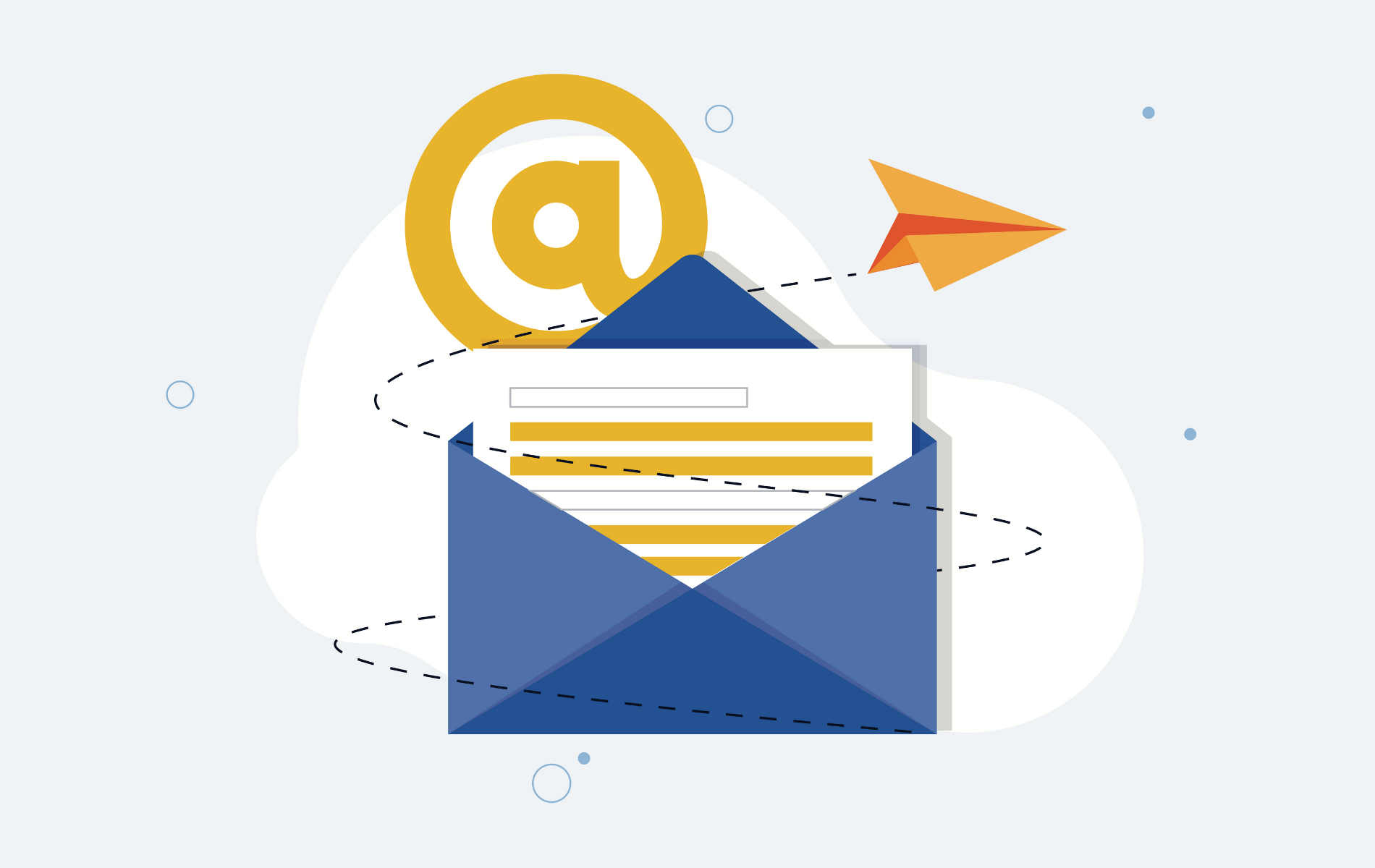In today’s digital age, where new marketing channels and technologies emerge constantly, it’s important to assess the relevance and effectiveness of traditional methods.
One such method is email marketing, which has stood the test of time and continues to deliver impressive results.
In this blog post, we will explore the power of email marketing in 2023 and why it remains a vital tool for businesses.
The Evolution of Email Marketing
Email marketing has come a long way since its inception.
From simple text-based emails to sophisticated designs, it has adapted to the changing digital landscape.
Despite the rise of social media, instant messaging, and other channels, email marketing has retained its position as a preferred communication tool for businesses.
In fact, according to recent statistics, email usage continues to grow, with over 4.3 billion email users worldwide in 2023.
Read Also: How to do Digital Marketing after 12th?
Benefits and Advantages of Email Marketing
Cost-effectiveness and high return on investment (ROI)
Compared to other marketing channels, email marketing offers a remarkably high ROI. With minimal costs associated with design and delivery, businesses can achieve significant results.
Direct and personalized communication with the target audience
Email allows businesses to engage directly with their audience in a personalized manner. By segmenting their email lists and crafting tailored messages, companies can deliver relevant content that resonates with their subscribers.
Ability to reach mobile users and the rise of mobile email
The widespread adoption of smartphones has made email even more accessible. Mobile optimization ensures that emails are responsive and visually appealing on various devices, enabling businesses to connect with their audience anytime, anywhere.
Data-driven insights and analytics for optimization
Email marketing platforms provide valuable data and analytics that allow businesses to measure the performance of their campaigns. By tracking open rates, click-through rates, and conversion rates, companies can gain insights into their audience’s preferences and optimize their strategies accordingly.
Integration with other marketing channels for enhanced results
Email marketing can be seamlessly integrated with other marketing channels such as social media and content marketing. By cross-promoting campaigns and leveraging different channels, businesses can amplify their reach and drive better results.
Read Also: The Power of Influencer Marketing
Email Marketing Best Practices in 2023
To maximize the effectiveness of email marketing, it’s important to follow the best practices:
Building a quality email list
Focus on growing an engaged and permission-based email list. Offer valuable incentives to encourage sign-ups and ensure compliance with privacy regulations such as GDPR and CCPA.
Crafting engaging and relevant content
Create compelling email content that aligns with your audience’s interests and needs. Personalize emails using subscriber data to deliver highly targeted messages.
Designing responsive and visually appealing emails
Optimize your email designs for various devices, ensuring a seamless user experience. Use eye-catching visuals, concise copy, and clear calls to action to encourage engagement.
Leveraging personalization and segmentation techniques
Segment your email list based on demographics, behavior, or preferences. This allows you to send targeted messages that resonate with specific segments of your audience.
A/B testing and optimization for improved performance
Experiment with different elements of your emails, such as subject lines, copy, visuals, and CTAs. Use A/B testing to identify what resonates best with your audience and continuously optimize your campaigns.
Ensuring compliance with privacy regulations
Stay updated with privacy regulations and ensure that your email marketing practices are compliant. Obtain proper consent, provide clear unsubscribe options, and handle subscriber data responsibly.
Read Also: Is Digital Marketing Going To Die?
Harnessing Automation and AI in Email Marketing
Automation and AI-powered tools are revolutionizing email marketing in 2023. These technologies offer several benefits, including:
Time-saving and increased efficiency
Automation streamlines repetitive tasks such as sending welcome emails, nurturing leads, and delivering personalized content. This frees up time for marketers to focus on strategy and creativity.
AI-driven personalization and predictive analytics
AI algorithms analyze data to deliver highly personalized recommendations and offers to subscribers. Predictive analytics help identify customer preferences and behavior patterns, allowing businesses to anticipate their needs and deliver relevant content.
Examples of successful automation and AI integration
Numerous businesses have leveraged automation and AI in their email marketing efforts. For instance, an e-commerce brand might send personalized product recommendations based on browsing and purchase history, leading to increased sales and customer satisfaction.
Read Also: The scope of digital marketing in India and all over the world
Case Studies: Real-world Examples of Effective Email Marketing
Let’s explore a few case studies that highlight the effectiveness of email marketing:
Case study 1
Company X’s successful email campaign and results. By implementing personalized recommendations and utilizing automation tools, Company X experienced a 30% increase in click-through rates and a 20% boost in conversions.
Case study 2
Non-profit organization’s email strategy and impact. Through targeted email campaigns, a non-profit organization achieved a 40% increase in donations and a significant growth in volunteer sign-ups.
Case study 3
E-commerce brand’s personalized email approach and sales growth. By leveraging AI-driven personalization, an e-commerce brand achieved a 25% increase in average order value and a 15% rise in customer retention.
Read Also: Best Digital Marketing Courses in Delhi with Placement Assistance
Strategies to Maximize the Effectiveness of Email Marketing
To enhance the impact of your email marketing campaigns, consider implementing these strategies:
Building strong email subject lines for higher open rates
Craft compelling subject lines that entice recipients to open your emails. Experiment with personalization, urgency, and curiosity to grab their attention.
Optimizing email deliverability and avoiding spam filters
Ensure that your emails reach the intended inbox by following email deliverability best practices. Avoid spam trigger words, maintain a good sender reputation, and regularly clean your email list.
Timing and frequency
Finding the right balance: Test different sending times and frequencies to determine when your audience is most receptive. Be mindful not to overwhelm subscribers with excessive emails.
Experimenting with different types of emails
Variety is key to keeping your email content fresh and engaging. Experiment with newsletter-style emails, promotional offers, event invitations, or curated content to cater to different subscriber preferences.
Tracking and analyzing key metrics to measure success
Regularly monitor key metrics such as open rates, click-through rates, conversion rates, and unsubscribe rates. Use this data to evaluate the effectiveness of your campaigns and identify areas for improvement.
The Future of Email Marketing
As we look ahead, several trends and innovations are shaping the future of email marketing:
Emerging trends and innovations
Interactive emails, AMP for Email, and gamification are gaining traction, allowing for richer and more engaging email experiences.
Role of artificial intelligence and machine learning
AI and machine learning will continue to play a significant role in email marketing. Predictive analytics, advanced personalization, and automated content creation will further enhance the effectiveness of campaigns.
Integration with other technologies
Email marketing will further integrate with technologies such as chatbots and social media, allowing for seamless multi-channel experiences and enhanced customer engagement.
Anticipated challenges and staying ahead
As email marketing evolves, challenges such as stricter privacy regulations and increased competition will arise. Staying updated with industry trends, embracing innovation, and maintaining a customer-centric approach will be crucial to success.
Conclusion
In conclusion, email marketing remains a powerful and effective tool in 2023.
Its ability to provide direct and personalized communication, reach mobile users, and deliver high ROI sets it apart from other marketing channels.
By following best practices, harnessing automation and AI, and leveraging real-world examples, businesses can unlock the full potential of email marketing and drive meaningful results.
Embrace the future of email marketing, stay ahead of trends, and watch your campaigns thrive.



